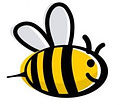Hello readers,
It’s April and the end of the school year is nigh! Most of us are not looking for new ideas this time of year, but I wanted to capture and share all the different ways we’ve come to practice high frequency words on a regular basis in our classroom. The video above might give you some ideas for next year. I know that for me, it will preserve what late spring looks like in my kindergarten classroom and give me a goal to work toward as I start the process of slowly introducing words all over again next August.
More than a year ago, I wrote about saying goodbye to sight words and hello to high frequency words. The post explains why I use the term high frequency words and my new plan for teaching them based on the science of reading. If you click on this link, ignore the video—it’s not pertinent—and just read.
In the video at the top of this post, you’ll see many different *easy* and *effective* ways that we incorporate practicing high frequency words into each day and week. As you watch, please realize that these activities have built up to what you see, starting on a much simpler level way back in the fall with far fewer words than what we’re working with in April.
Here is a list of what you’ll see and how often we do this in my classroom:
Soft start (students arrive anytime between 8:45 and 9:00) — After washing hands and signing in, they practice their current list of words and current number chart. 5 days per week.
Lunch count — Students say and spell one high frequency word if they want school lunch and another if they have a lunch from home. 5 days per week.
Word list tests — Twice a week small group instruction is devoted to students taking a test on their current word list. There are 34 word lists arranged by spelling patterns. 2 days per week.
Center rotations — When students are at my center but not at my reading table, they read independently from their reading folders, which are chock full of word lists and fluency ladders and other continuous texts that contain many high frequency words. 5 days per week.
Word sorts at the independent center — Students refer to our list of high frequency words and sort the words into four different groups based on varying criteria. 1 time per week.
Writing words on giant dry erase board — Students refer to our list of high frequency words and write (and read!) as many as they can while at this center. 1 time per week. 1 day per week.
Spelling tests — There are a few students who have learned to read all 34 word lists and are now going back to the beginning lists and learning to spell the words. Note that due to the fact that most high frequency words are spelled just the way they sound, most students learn to spell the words as they learn to read them; the spelling test is just a fun formality. 2 days per week.
Fluency ladders and other continuous texts — Each week, students get a new fluency ladder or other continuous text to read and then insert into their reading folders. These are full of high frequency words that the students read over and over and over. 1 day per week.
Whole group writing — 30 minutes of daily writing affords lots of time to practice high frequency words in authentic writing situations. 4 days per week.
Whole group word sort — This is how I taught my students to do word sorts and this is how I introduce new criteria for sorting. 1 or 2 times per week.
Dismissal - The special helper of the day (Busy Bee) calls on students to read and spell a word before getting up and getting their backpack and preparing for dismissal. 3 days per week.
Again, these are easy ways I’ve found to incorporate high frequency word practice into the days and weeks of spring.
Please realize that all the high frequency words you see on the video were introduced one at a time (usually two per week). With the regular high frequency words, we talked about how easy they are to read and write because they follow the phonics that we’ve learned in our class. For the irregular words (i.e., heart words), we analyzed each sound and the letter used to represent it and decided which parts of the word were easy and which were “a hard part to remember by heart.” There are no video clips of this process in the video above, but please know that it did happen.
That’s it for now. As always, AMA (ask me anything!) and I’ll be glad to respond.
Yours sincerely,
Randee





Ways to Practice High Frequency Words